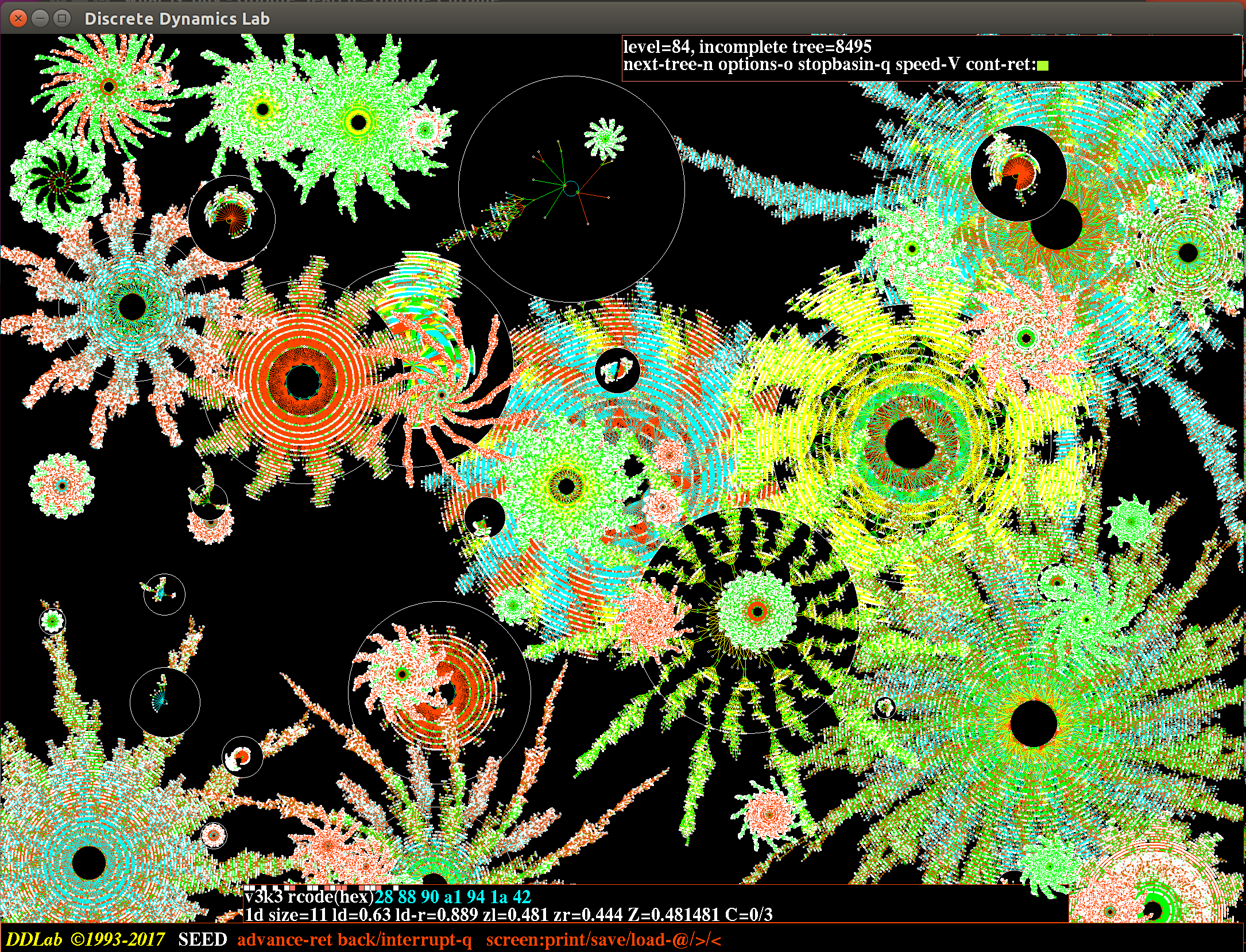

| Discrete Dynamics Lab |
Update March 2017ddlabz05 is documented in an updated hyperref PDF EDD2ndEd-March2017update.pdf which can be downloaded HERE. This is an updated version of Exploring Discrete Dynamics, Second Edition (EDD2) (2016) published by Luniver Press, a 8x10 inch 577 page paperback with color figures, which can be purchased at Amazon-UK, Amazon-USA, and other online book sellers.
March 2017 updates (on the
May 2016 release)
include the following new features, as well as improvements and bug fixes. |

|
xxxxxxxxxxxxxxxxxxxxxxxxxxxxxxxxxx DDLab has been updated at regular intervals since its release in 1995. Its precursor was the Atlas software included on diskette inside the back cover of "The Global Dynamics of Cellular Automata" 1992. For a list and download of this and older versions click here. Below are links to previous updates,
May 2016 (EDD 2nd Ed) |
Return to the
Discrete Dynamics Lab home page.
Last modified: April 2017